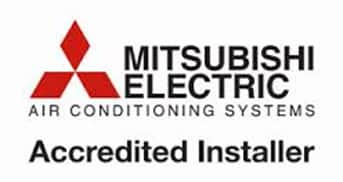Busy modern living often strips us of the time and inclination we need to question the ‘hows’ and ‘whys’ surrounding everyday life, particularly when so many of us only have to give a shout out to Alexa for a quick, simplistic answer. Plus, technical questions often see us shying away from researching a topic for fear of being blinded by science.
However, when you are investing in a quality product like air conditioning, we want you to have the knowledge of its basic function. Having knowledge of a product before you buy is important. So, in this blog we are going back to basics to answer the question ‘how do air conditioning units work?’ Don’t worry, you do not need to be an engineer to enjoy this read!
Installing air conditioning allows you to change the temperature of the air and keep humidity levels in check.
The only bit of physics you need to know to understand how air con works, is that heat is a kind of energy which cannot be destroyed (or created). For the budding scientists among you, we are talking about the law of conservation of energy where the amount of energy in a system always stays the same.
Simply put, air conditioning does not make the air cooler, it draws the existing air’s heat energy out of your house by transferring that heat to the outdoors. It then replaces the air inside your home with cooler air.
How air con works: the basics:
- An air conditioning unit sucks in warm air through its grille. The air is sucked in by a fan (a bit like a hoover).
- The fans move the warm interior air over a set of pipes (or coils). The pipes coils contain a cold fluid. As the warm air flows over the pipes, the fluid becomes warmer while the air becomes cooler.
- Depending on the kind of air con unit you have installed; the air might then flow over similar pipes designed to heat the air up. This is great in the winter when you want to add extra heat to a room rather than cool it down. In the summer, this part of the air con unit will not be turned on.
- A fan then blows the cooled air back into the room. Over time, this will cool the room down to whatever temperature you select.
- The fluid which made the air cooler, but absorbed all the heat, now has to be cooled down again, so it is ready to repeat the cycle again. The fluid flows through what is called a compressor unit and then a condenser unit which makes it cold again. The air con unit constantly sucks more air in, which flows over the air-chilling pipes. The coolant constantly flows through the compressor and condenser, which keeps the fluid cool. This process will gradually cool down the air in your house, until it gets to the temperature selected on the thermostat.
The air con unit will recognise when the air gets too cold and will turn off. Likewise, when it recognises the air is too warm, it turns on again.
Where does the heat go?
The heat has to go outside. As we found out earlier in our basic physics law, the air con unit does not make the air cooler. Instead, it absorbs the heat and sends it elsewhere. That is why part of the air conditioning unit is inside, and part of it is outside. Remember those pipes (or coils) that we touched on earlier? Well, when the fluid inside them is cooled down, you still need to get rid of the heat. The fluid gets cooled down by the heat being sent out into the air outside. The heat energy inside your house gets transferred outside, the energy does not get destroyed, just sent somewhere that will not affect your room temperature.
Air conditioning has many benefits. If you are considering installing an air conditioning unit or you need an existing one repaired or serviced, we would love to help. Just give us a call 02083331191 or email us at info@jpaircon.com.



